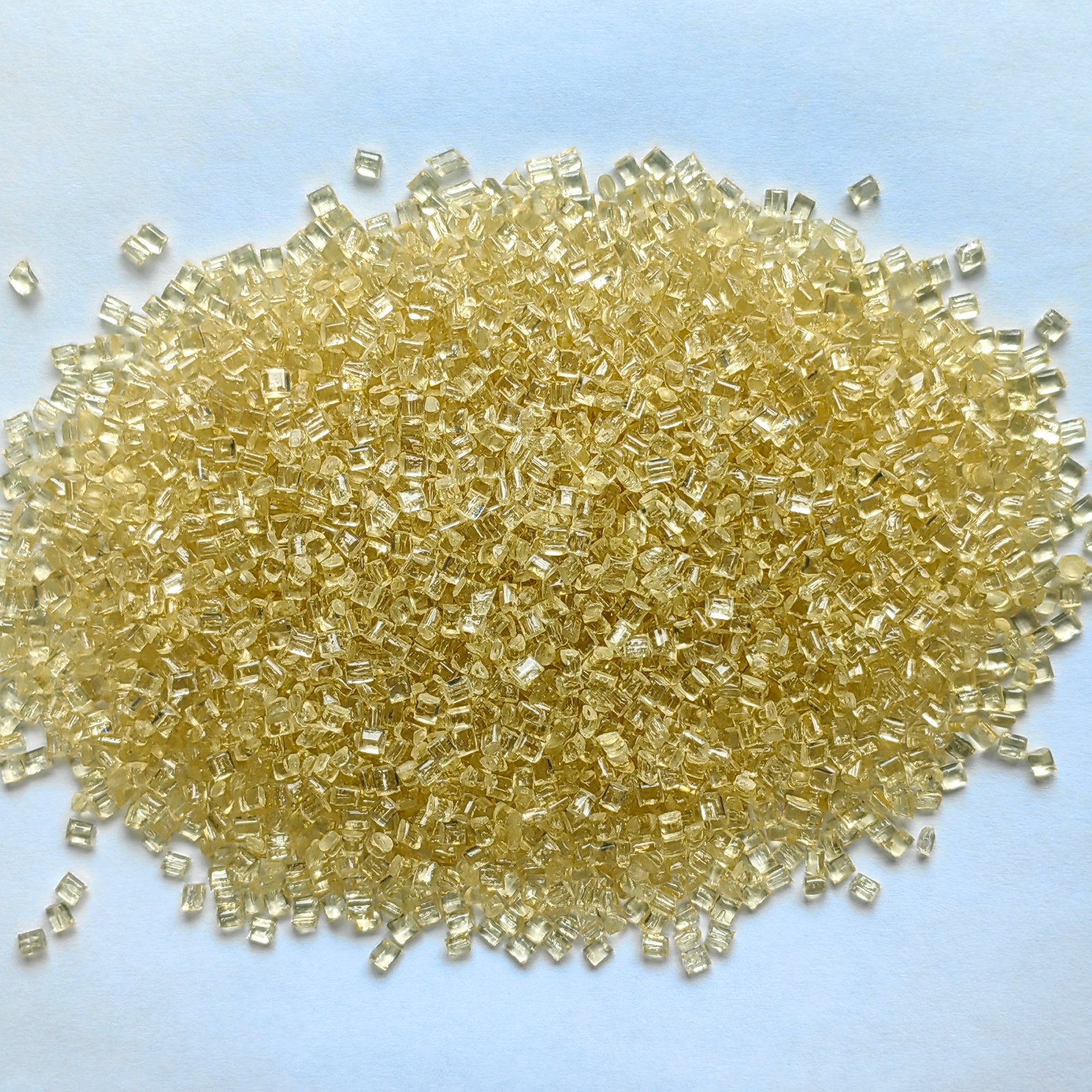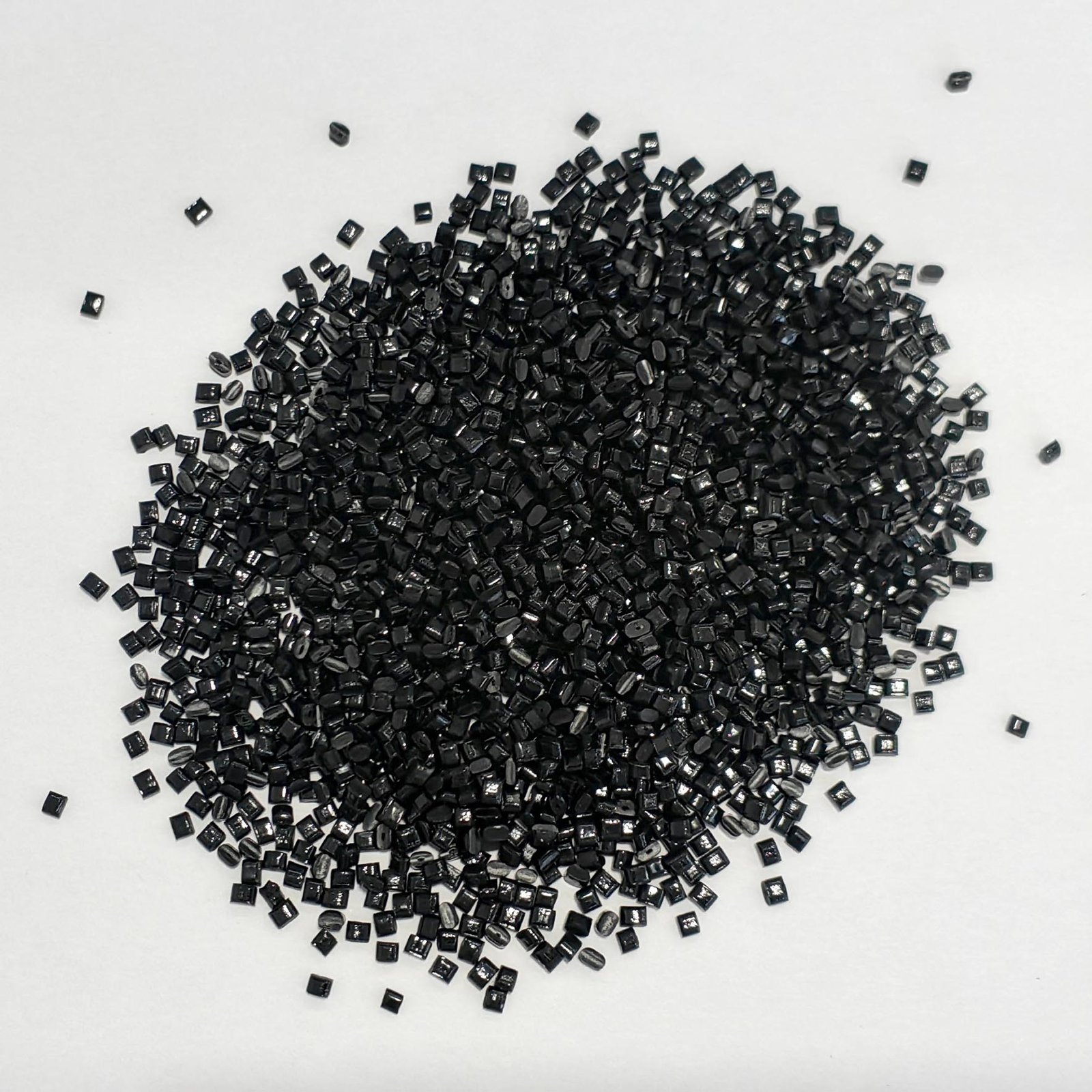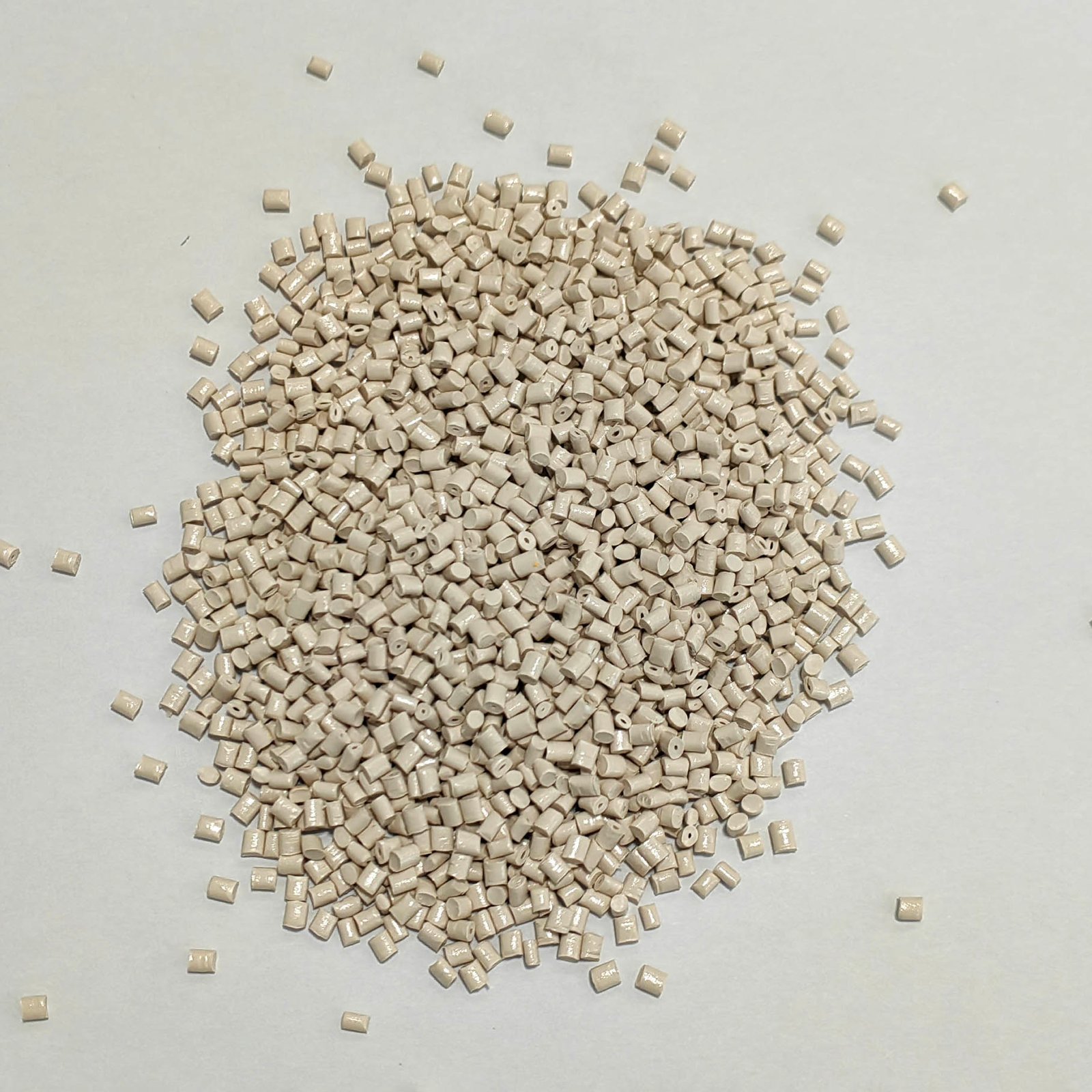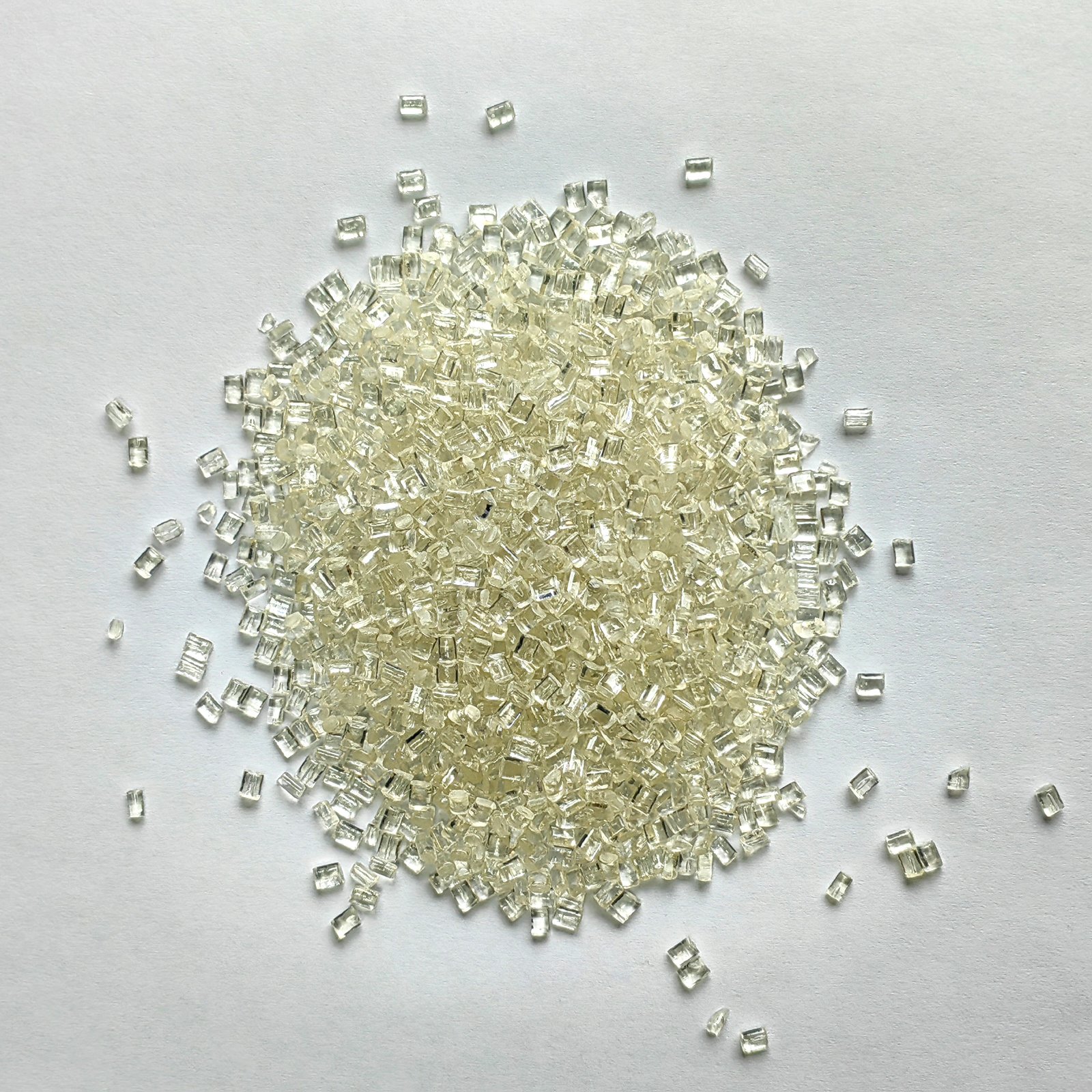สินค้า


PESU KR 4113 | Reinforced PES Resin with CF+Graphite+PTFE
โครงสร้างผลิตภัณฑ์
What is PES Resin
As high-end equipment manufacturing continues to move towards "lighter, stronger, and more durable", the performance boundaries of traditional engineering plastics are being rapidly approached. A single reinforcement method can no longer meet the composite requirements for multiple properties such as rigidity, wear resistance, and thermal conductivity. At this time, BASF's PESU KR 4113, as a high-performance PES resin modified with 30% carbon fiber + graphite + PTFE filling, is becoming a new material solution for engineers to cope with harsh environments.

01 | What is PESU KR 4113? ——Triple filling system enables multi-dimensional breakthroughs in materials
PESU KR 4113 is a filling-grade composite material developed based on polyethersulfone (PES) resin, with the following structural and performance characteristics:
・Carbon fiber reinforcement: provides extremely high modulus (up to 11000 MPa), improves rigidity and dimensional stability;
・Graphite filler: improves thermal conductivity and surface lubricity, and reduces friction coefficient;
・PTFE filling: enhances self-lubrication, improves wear resistance and anti-seizure ability;
・High temperature resistance: heat deformation temperature 223°C, glass transition temperature 225°C, suitable for high heat conditions;
・Stable dimensional accuracy: shrinkage rate as low as 0.31% (flow direction), very suitable for precision molded parts;
・Wear and electrical considerations: Even if the electrical insulation is reduced (surface resistance 10³~10⁵Ω), it is still within the controllable range for most engineering applications.
This type of multi-composite PES resin is not only an "upgraded version" of traditional reinforced materials, but also a material architecture innovation for complex system applications.
02 | Typical performance analysis: Rigidity first, taking into account impact toughness and thermal stability
In actual data, PESU KR 4113 shows extremely strong structural performance:
▶ Tensile strength 115 MPa / tensile modulus 11000 MPa
Comparable to some metals, suitable for load-bearing design of thin-walled structural parts.
▶ Notched impact strength (-30°C) is 5.5~6.5 kJ/m²
Excellent performance among reinforced materials, indicating that it has not lost toughness due to high filling.
▶ In terms of thermal performance, HDT is as high as 223°C
Compared with PA, PPS, and even some PESU standard materials, its thermal stability is more advantageous.
▶ Linear expansion coefficient 1.1E-5 cm/cm/°C (23~80°C)
The dimensional change is extremely small, suitable for application scenarios such as precision sliding structures, gears, pump valve seals, etc.
PESU KR 4113 resin datasheet
| พฤติกรรมทางกล | เงื่อนไข | มาตรฐาน | ค่า | หน่วย | |||
| การยืดตัว | หยุดพัก | ISO 527 | 1.5 | % | |||
| อิซอด นอทช์ อิมแพ็ค | 23°ซ | ISO180 | 6.5 | กิโลจูล/ตรม | |||
| อิซอด นอทช์ อิมแพ็ค | -30 องศาเซลเซียส | ISO180 | 5.5 | กิโลจูล/ตรม | |||
| ความต้านแรงดึง | หยุดพัก | ISO 527 | 115 | MPa | |||
| โมดูลัสแรงดึง | ISO 527 | 11000 | MPa | ||||
| ชาร์ปี้ อิมแพ็คแบบไร้รอยบาก | 23°ซ | ISO179 | 24 | กิโลจูล/ตรม | |||
| ชาร์ปี้ อิมแพ็คแบบไร้รอยบาก | -30 องศาเซลเซียส | ISO179 | 20 | กิโลจูล/ตรม | |||
| แรงกระแทกแบบชาร์ปี้ โนตช์ | 23°ซ | ISO179 | 6.5 | กิโลจูล/ตรม | |||
| แรงกระแทกแบบชาร์ปี้ โนตช์ | -30 องศาเซลเซียส | ISO179 | 5 | กิโลจูล/ตรม | |||
| ความร้อน | เงื่อนไข | มาตรฐาน | ค่า | หน่วย | |||
| เอชดีที | 1.8MPa | ISO75 | 223 | องศาเซลเซียส | |||
| อุณหภูมิการหลอมละลาย | 350~390 | องศาเซลเซียส | |||||
| อุณหภูมิเปลี่ยนผ่านของแก้ว | 10°C/นาที | ISO11357 | 225 | องศาเซลเซียส | |||
| คลี | Flow 23~80°C | ISO11359 | 1.1E-5 | ซม./ซม./°C | |||
| คลี | Flow 180°C | DIN 53752 | 1.3E-5 | ซม./ซม./°C | |||
| คุณสมบัติทางกายภาพ | เงื่อนไข | มาตรฐาน | ค่า | หน่วย | |||
| การดูดซึมน้ำ | 23°ซ | ISO62 | 1.5 | % | |||
| การดูดซึมน้ำ | 23°C 50RH Balance | ISO62 | 0.50 | % | |||
| การหดตัว | ไหล | ISO294 | 0.31 | % | |||
| การหดตัว | xFlow | ISO294 | 0.46 | % | |||
| ความหนาแน่น | ISO1183 | 1.48 | กรัม/ซม.³ | ||||
| ดัชนีการหลอมละลาย | 360°C 10kg | ISO 1133 | 10 | cm³/10นาที | |||
| ความหนืดสัมพัทธ์ | ISO307 มาตราฐานสากล | 56 | ซม³/ก. | ||||
| คุณสมบัติทางไฟฟ้า | เงื่อนไข | มาตรฐาน | ค่า | หน่วย | |||
| ความต้านทานปริมาตร | มอก.62631 | 9E+5 | Ω.ซม | ||||
| ความแข็งแรงของฉนวนไฟฟ้า | K20/K20 | ไออีซี 60243 | 8 | เควี/มม | |||
| ความต้านทานพื้นผิว | มอก.62631-3-2 | 4E+3 | โอห์ม | ||||
| ความแข็ง | เงื่อนไข | มาตรฐาน | ค่า | หน่วย | |||
| ความแข็งของรอยบุ๋มของลูกบอล | H961/30 | ISO2039 | 180 | MPa | |||
03 | Application trends and scenarios of PES Resin's multiple performance integration
Combined with its high modulus, high thermal stability and low friction properties, PESU KR 4113 performs well in the following industrial fields:
Precision machinery and industrial equipment
-High-temperature sliding sleeves, guide rail sliders
-Chemical liquid resistant pump body parts
-Movable parts in lubrication systems
Aerospace and rail transportation
-Lightweight high-temperature electrical insulation parts
-Structural bushings with self-lubricating functions
-Electrical connector protection structure
Automobile engine compartment parts
-High-heat and wear-resistant interface parts (such as EGR module housing, thermostat housing, etc.)
-Small sealing parts, wiring harness conduction structures
Semiconductors and high-cleanliness equipment
-Controllable structural parts with medium conductivity + low particle release (non-insulating occasions)
The emergence of this type of highly filled PES resin material has led to the evolution of the traditional material design method of separating structure and function. More and more manufacturers are pursuing structural strength, temperature stability, self-lubrication and chemical protection on one component at the same time.
04 | Comparison with conventional PESU materials: How does KR 4113 stand out?
| Comparison Item | Standard PESU Materials (e.g., PESU 2010 G6) | PESU KR 4113 |
| Reinforcement Type | Glass fiber reinforced | Carbon fiber + Graphite + PTFE |
| โมดูลัสแรงดึง | 6000–7000 MPa | 11000 MPa |
| แรงกระแทก | สูง | Medium to high (maintains toughness) |
| Wear Resistance | ปานกลาง | Excellent (PTFE + graphite) |
| เสถียรภาพทางความร้อน | 200–210 องศาเซลเซียส | 223°C |
| ฉนวนไฟฟ้า | Strong | Reduced (but controlled) |

PESU KR 4113 is a composite product designed to meet the integrated design of "structure + movement + temperature resistance + friction control", which is more in line with the selection logic of industrial parts under the trend of multi-function and high integration.
05 | Why choose us instead of looking for a brand directly?
Good materials are not just talk on paper, but require the coordination of four steps: implementation, molding, delivery, and after-sales. High-tech threshold materials such as PESU KR 4113 are truly adapted to customer scenarios, and what is needed is not only "supply", but "assisting solutions".
As a senior trader who has been focusing on plastic raw materials for 24 years, compared with direct docking with brand owners, our advantages are:
-Cross-brand selection suggestions, not limited to models;
-Small batch support, suitable for trial production and modification verification;
-Quick response, technical assistance in place, avoiding trial and error and waiting;
-Targeted recommendation + upstream and downstream connection capabilities, helping customers save test material costs and development time.
In today's market environment that emphasizes cycle control + flexible implementation + cost optimization, we are the link that understands the needs most between materials and products. Choosing us is not to buy a bag of resin, but to avoid three months of detours.
【Recommended reading and internal link guidance】
🔗 PESU 2010 G6: Analysis of glass fiber reinforced polyethersulfone materials >>
🔗 Polysulfone vs Polyethersulfone: In-Depth Comparison of Sulfone-Based Engineering Plastics >>






